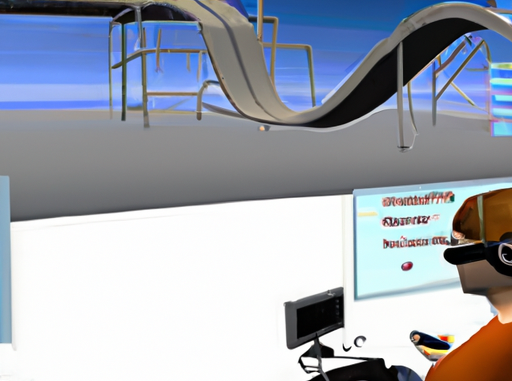
How Virtual Reality is Transforming Classroom Learning
In recent years, Virtual Reality (VR) has emerged as a groundbreaking tool in various sectors, including entertainment, healthcare, and education. Within educational settings, VR is paving the way for innovative teaching methods, offering immersive experiences that have the potential to transform traditional learning models. This article explores how VR is being integrated into classrooms to enhance learning experiences, improve student engagement and retention, and provide practical applications across various subjects.
Immersive Learning Opportunities
One of the most significant advantages of VR in education is its ability to create immersive learning environments. Unlike traditional classroom settings, VR can transport students to different times, places, and even fantastical worlds, providing experiences that are otherwise impossible to replicate. For example, in history classes, students can walk through ancient civilizations or witness historical events firsthand, fostering a deeper understanding of the material. In science education, VR can simulate complex experiments and phenomena, allowing students to interact with and observe processes like chemical reactions or the functioning of an ecosystem in real-time.
Improving Engagement and Retention
VR’s immersive nature also plays a crucial role in boosting student engagement and retention. When students are actively involved in their learning process through interactive and engaging content, they are more likely to retain the information. VR encourages active participation, keeping students focused and interested in the subject matter. This engagement is particularly beneficial for visual and kinesthetic learners who benefit from seeing and experiencing concepts rather than just reading or hearing about them.
Practical Applications Across Subjects
The practical applications of VR in education are vast and varied. In geography classes, VR can help students explore different regions of the world, enhancing their understanding of geographical features and cultural diversity. In language learning, VR can simulate real-life conversations, providing students with the opportunity to practice speaking and listening skills in a controlled environment. Additionally, VR can be used in medical training, where students can practice surgical procedures or diagnose patients in a risk-free virtual setting.
Challenges and Considerations
Despite its potential, the implementation of VR in educational settings comes with challenges. One of the primary concerns is the cost associated with VR technology. While prices for VR headsets and software continue to decrease, the initial investment can still be significant, especially for schools with limited budgets. Additionally, there is a need for training teachers to effectively integrate VR into their curriculum, ensuring they can use the technology to its full potential.
Accessibility is another consideration, as not all students may have equal access to VR technology, potentially creating a digital divide. Schools must find ways to ensure that all students can benefit from VR-enhanced learning experiences.
Conclusion
Virtual Reality is poised to revolutionize classroom learning by providing immersive learning opportunities that enhance student engagement and retention. While there are challenges to overcome, including cost, training, and accessibility, the potential benefits of VR in education make it a promising tool for the future. As technology continues to evolve, VR will likely become an integral part of educational practices, offering students new and exciting ways to learn and explore the world around them.
PhDr. Pavel Bartoš, LL.M., DBA (Evropská akademie vzdělávání / European Academy of education)
Leave a Reply